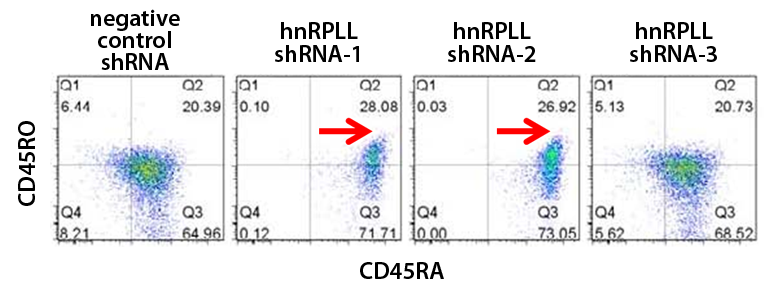The Human Correlation Core works in a complementary manner with the Forward Genetics Core and employs the analytical capabilities of the Genomic, Systems Biology and CyTOF cores as advanced technologies are needed. Select subsets of immune regulatory genes identified in ENU mutagenized mice are examined to determine if expression and function are similar in mouse and human. These studies are performed using primary cells isolated from the blood of normal human donors, starting with purification of peripheral blood mononuclear cells on Ficoll-Paque followed by positive or negative selection using Miltenyi paramagnetic beads to obtain populations of T cells, B lymphocytes or monocytes. Approaches for genetic modification in the primary cells include lentiviral transduction with expression of marker genes and shRNA. In the case of CD4 T cells, chemically modified siRNA (e.g. Accell siRNA from Thermo Scientific) is also effective. These methods enable gene expression knockdown ranging from 50-90% within 4-7 days providing a range of phenotypic modification for downstream analysis. Partial knockdown is particularly useful in cases where knockout is lethal.
Because of normal variation in populations of human blood donors, standard practice is to use 2-4 donors for all purifications and transductions. For example, 40 mL heparinized blood will generally yield 3-4×107 PBMC, 5×106 monocytes, 1-2×107 T cells, and 5×106 B cells, providing ample material for analysis. Purified cells are maintained in an appropriate medium and agonist environment as required for continued viability, proliferation, and efficiency of transduction by lentivirus. This includes GMCSF +/- IL-4 for monocytes, comitogenic stimulus and IL-2 for T cells, and CD40 ligand multimer, IL-2 and other cytokines and stimuli for B cells. The purified cell populations can be maintained for weeks to months in culture; however, we routinely perform lentiviral transduction within hours to days of establishment of primary cell culture as needed to obtain optimal conditions for lentiviral transduction or differentiation of cells (e.g. monocytes to macrophages). Where complete knock out of one or more gene targets is required, transient expression of Cas9/guide RNA in cord blood CD34+ progenitor cells is used for genetic modification followed by selection and differentiation.
